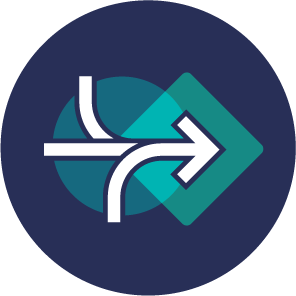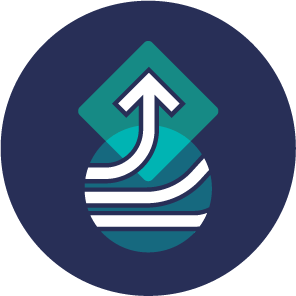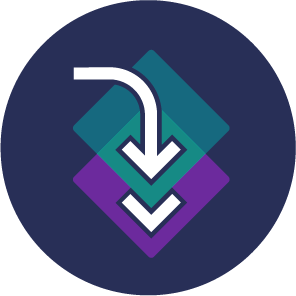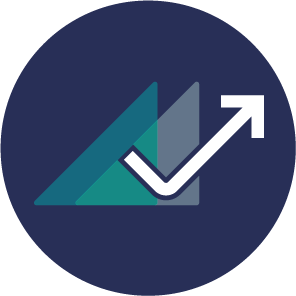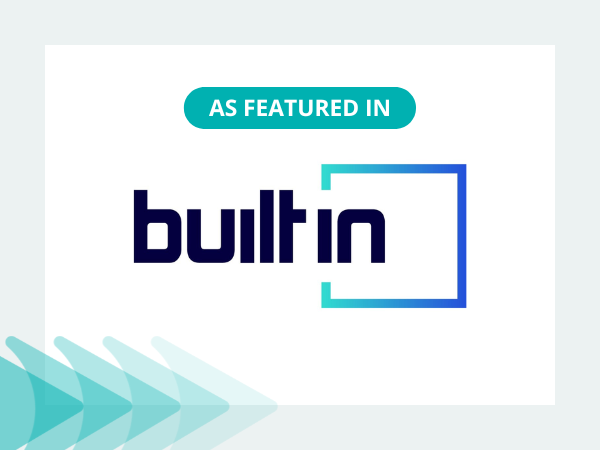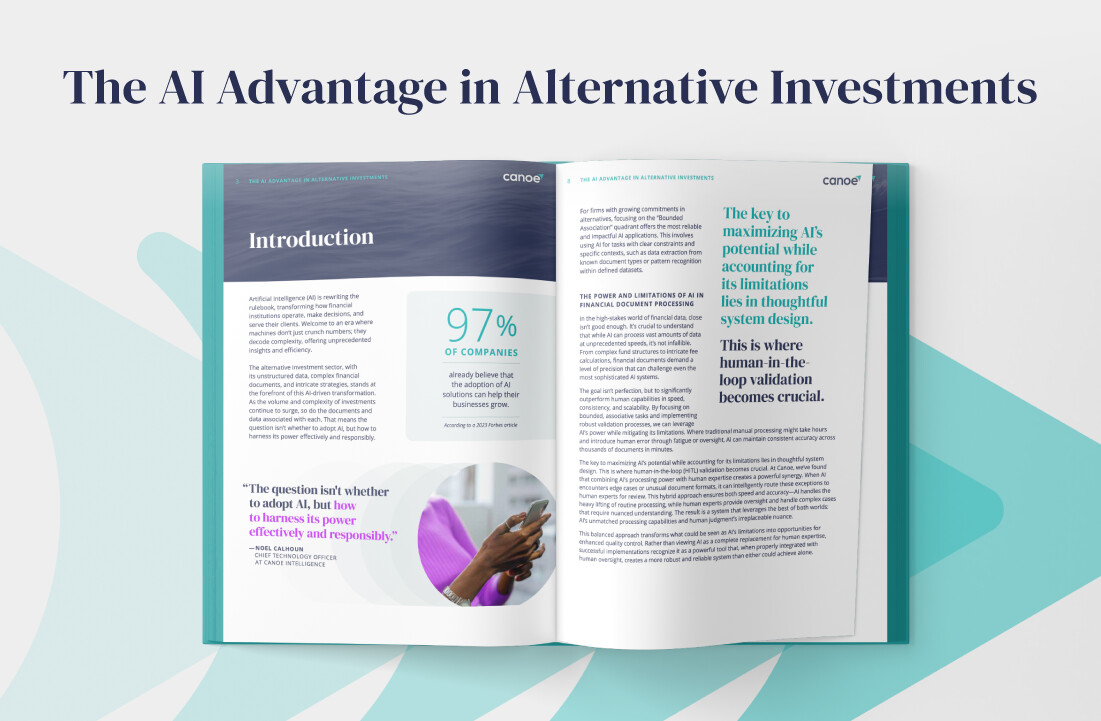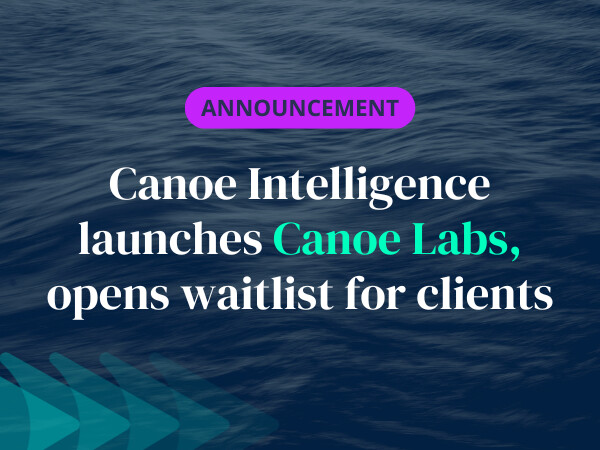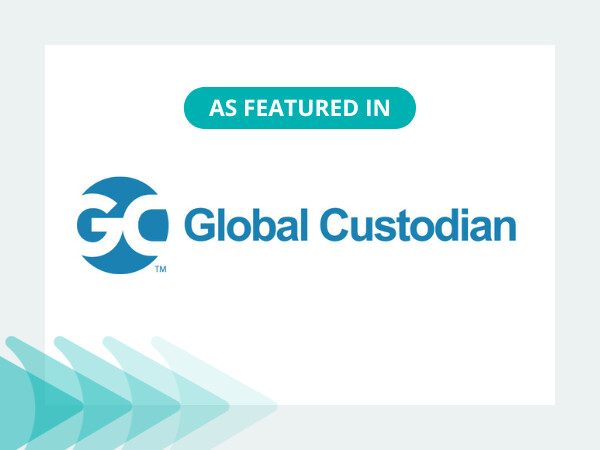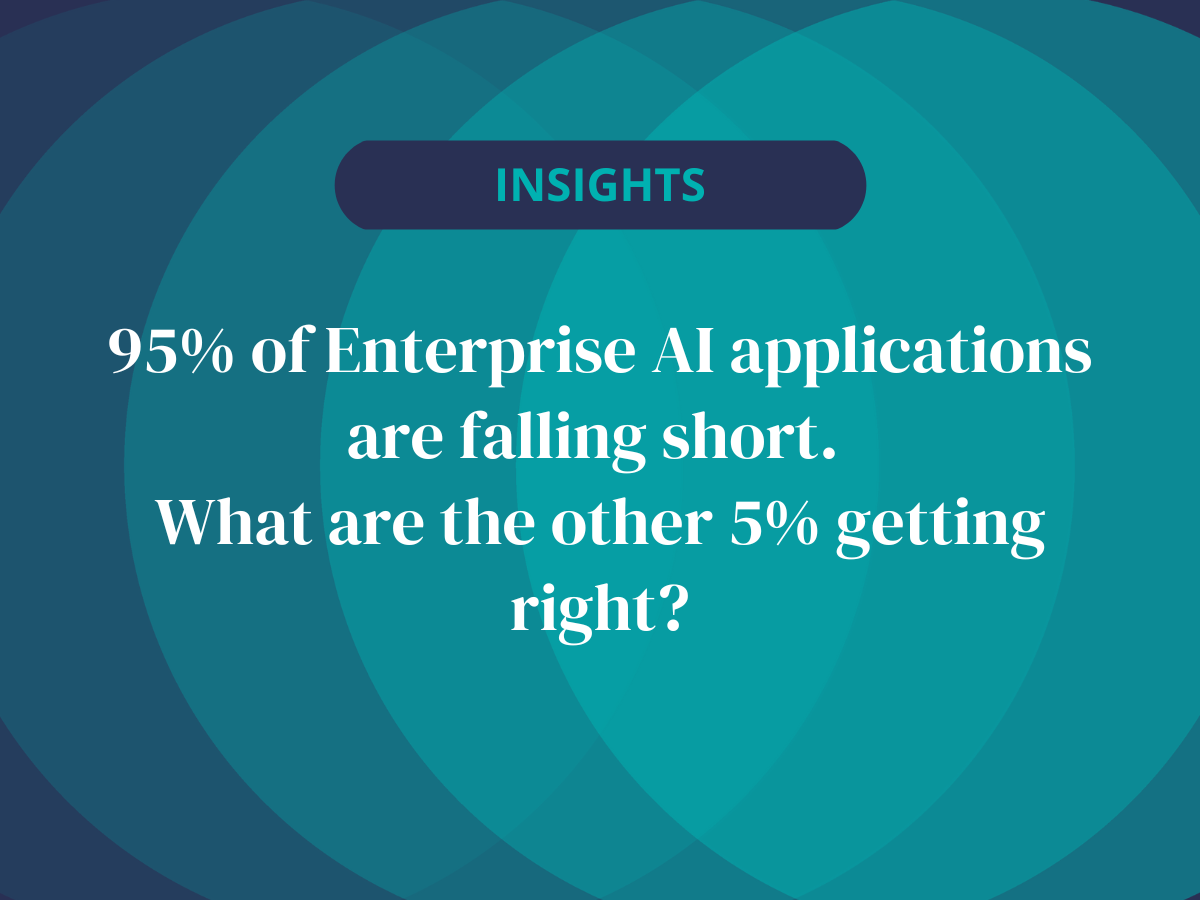The Canoe Optimized Workflow Step 3: Data Extraction
This article is part three of a five-part series covering each aspect of the Canoe Optimized Workflow. The Canoe Optimized Workflow is a roadmap for any organization investing in or allocating to alternative investments to unlock new efficiencies and reimagine their operational processes by leveraging a combination of breakthrough technology and industry expertise.
Introducing Automation and Scalability to a Long-Standing Manual Process
After you gather and organize all of your client reporting documents, it’s now time to identify the relevant data points within each document, extract these data elements, and save the information for future use in downstream systems. This data capture process is being done manually as the structure, style, and length of documents vary. Some documents have all of the data available in table format, others have data points within text portions, and some documents have data spread throughout multiple pages. Formatting of documents is entirely inconsistent across fund and administrator, and the terminology used within these reports is generally non-standardized. All of these complexities make it difficult to automate the extraction of this important information using generic data capture tools, OCR, or RPA solutions.
As a result, many organizations build out large teams, either onshore or offshore, to manage this process; however, scaling these tasks becomes unsustainable quickly, as more staff is required as organizations grow.
Some key challenges we’ve identified include:
- Automation and Scalability. There is no industry-standard technology to manage the complex structure of investment documents. Some firms are using generic PDF scrapers or OCR tools to capture some data within tables, but these technologies cannot handle data extraction for all types of documents and require more administration than managing the process without technology. Because of this, most organizations continue to handle the process manually and hire more employees to process and extract more client documents. With this approach, it is difficult for organizations to set a strong foundation for future growth.
- Team Turnover. Performing manual data extraction from PDF documents is not a highly desirable, nor rewarding position to hold. This task is tedious, error-prone, and detailed. Therefore, organizations experience employee dissatisfaction and ultimately, turnover, in these roles. With a significant amount of turnover in these positions, new employees must be onboarded and trained quickly in order to keep up with client demand. This training process can take more time away from client-facing tasks and relationships.
- Data Quality and Governance. Any manual process is prone to fat-finger errors. Even the most highly detail-oriented professionals make mistakes from time to time. And at volumes potentially reaching millions of documents processed per year, mistakes can pile up. The result is either poor data quality in downstream reporting solutions, or inefficient reconciliation workflows layered on top of the data extraction process to catch user mistakes. Additionally, for those firms choosing to offshore or outsource the process, data security, governance, and control are sacrificed which creates a suboptimal outcome for organizations managing outside client capital.
Similar to how our team approached the first two steps (Document Ingestion and Categorization), we’ve also applied our past experiences and know-how to this Data Extraction problem. We knew that the current approach is not a sustainable solution and set out to change that. While there have been improvements on the margins (e.g. generic text scrapers to help a small portion of the overall process), there hasn’t been a targeted solution to solve the end-to-end workflow using technology.
Canoe is solving the data operations challenge with technology. In the same way that an individual gets smarter and more efficient after seeing and processing hundreds of documents, our technology gets smarter and more efficient by processing millions of documents. Clients now and in the future are the beneficiaries of that scale in a way that no other solution provides.
The Canoe Way
Unlike common data capture methods like OCR, Canoe Intelligence employs the most advanced blend of proprietary and open-source technologies to reliably extract relevant data from complex PDFs.
- Superior Data Extraction. A combination of multiple approaches, like Natural Language Processing (NLP), text anchoring, spatial and coordinate recognition, meta-data analysis, Machine Learning pattern generation, advanced table detection, and others, enables the creation of sophisticated, flexible, and reliable patterns used for data extraction at scale. No matter the document length or structure (ex: floating tables), Canoe’s extraction engine captures and normalizes data with ease.
- An Ever-Growing, Shared Intelligence. Clients leverage the shared intelligence to extract data based on other learning in the system and then create bespoke patterns to extract data and meet client needs in seconds. Canoe’s growing intelligence improves speed, recognition, and processing rates for all.
- Unparalleled Access to Data. Canoe’s extraction engine enables clients to gather more reporting data than ever before. Many firms choose only to extract the required data elements needed to reconcile information and populate downstream reporting systems. With Canoe, they’re able to go back through the data-rich historical documents and carry out a comprehensive data collection initiative that they were unable to engage in due to prior capacity constraints. This robust data set can be accessed in a few clicks, and then used for data science projects or deeper analytics.

